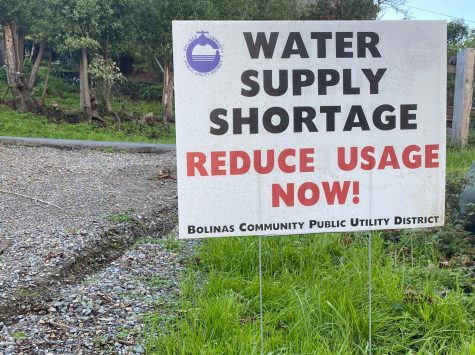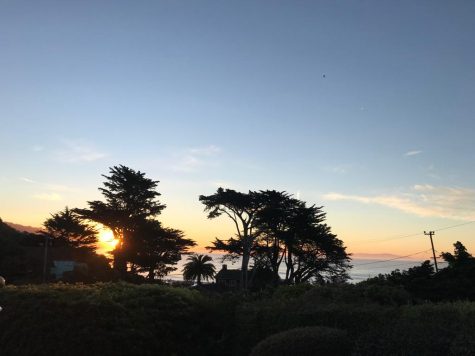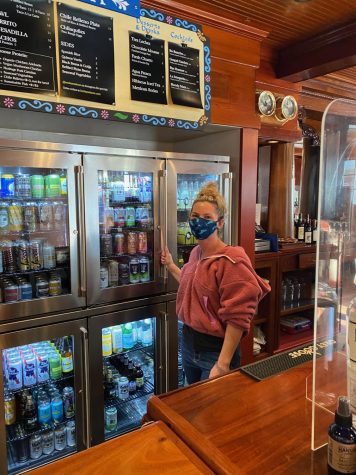On Wednesday, Feb. 3, the board of directors for the Bolinas Community Public Utility District (BCPUD) convened to discuss and present a plan to the Bolinas community for mandatory water rationing amid a “prolonged drought condition” in the district. The meeting yielded the announcement of a mandatory water rationing system plan for every water connection within the utility. The plan will be presented for approval no later than March 1, 2021.

Bolinas has relied on an ongoing permanent rationing system dating back to the 1970s due to the town’s dependence on an already scant water supply. Lydon Comstock, one of five directors on the board of the BCPUD, says Bolinas rainfall is on pace for a record low, putting stress on residents to conserve water. Bolinas pulls water from the Arroyo Hondo Creek and a few small wells, according to Comstock.
“The creek itself is quite small. If you go to a narrow spot in the dry season you could jump over it. … Available water has really diminished and we don’t have other supplies to tap into. So we’ve already been in further levels of voluntary water rationing for the past several months,” Comstock said.
Comstock recommends shorter showers and not flushing toilets as often and blames landscaping water use as a top consumer of municipal water.
Chelsea Maissen-Kahn, a Bolinas resident and waitress at Smiley’s Saloon in downtown Bolinas, anticipates changes for Smiley’s as drought conditions worsen. She says that the bar and hotel will most likely have to switch to off-site cleaning of sheets for their hotel rooms in order to conserve water.
Water supply in Bolinas is further strained by an increase in population and tourism as a result of the COVID-19 pandemic. Many of these tourists, Comstock says, are not particularly mindful of

the water shortage. Marin residents are flooding the Bolinas oceanfront, short term rentals and their second homes like never before with more time on their hands as well as the ability to work remotely.
“We still had some heavy water users in December –– [in] our minds that is clearly an indication of households having more people in them than usual,” Comstock said.
Senior Kayla Sutton owns a second home in Bolinas, which she says her family uses almost every weekend. According to Sutton, because they are only in their Bolinas home for a relatively low amount of time, the Suttons use less water. While Marin families with second homes in Bolinas, like the Suttons, follow the recommended water use reduction strategies, increased stays in Bolinas contribute to dwindling water supplies.
“For me [water conservation has been] kind of just been a normal thing [in Bolinas],” Sutton said. “We have to take really short showers and conserve our water a lot more.”
The water use shortage has exacerbated a divide between temporary residents and locals, who cite the second-home owners for driving up living prices in Bolinas and not contributing to the community.
“[Non-permanent homeowners] are not as conscious as the actual locals here. … I just wish they’d be more aware and cautious and keep us, locals, in mind,” Maissen-Kahn said.

While many Bolinas residents hold non-locals accountable for the recent record water shortages, Comstock makes it clear that the main problem is supply and that the community as a whole has done an exemplary job of decreasing water usage. Despite this success, the outlook on Bolinas’ water future remains dismal as Comstock points out that the measures BCPUD has to take will be severe.
Locals are not seeking to dissuade tourists and Redwood students from visiting Bolinas, but Comstock and Maissen-Kahn both echo the importance of preserving what makes Bolinas a community.
“Just be aware. Be people do live here. People are trying to survive in this town. It’s not just some show that we’re putting on for people,” Maissen-Kahn said.






![“[The Scotty Lapp Memorial Skatepark signifies that] Scotty’s energy, fun vibes and spirit will live on forever,” Jason Lapp said.](https://redwoodbark.org/wp-content/uploads/2025/03/346E3938-2C25-4CBB-9D6B-0ED4BD4A242A_1_105_c.jpeg)
